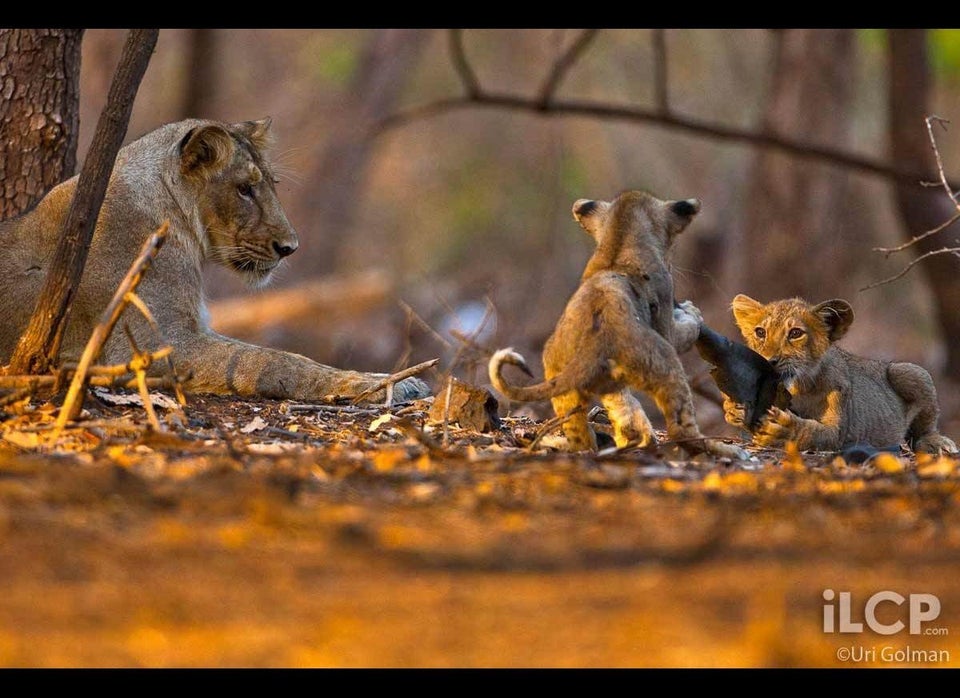A small teak forest in India’s western state of Gujarat is home to some of the last wild Asiatic lions in this world.
Not many people know about these lions. When I chose to go there to work on a personal project about endangered wildlife in India, I was often asked if I was maybe thinking about the better known Bengal tigers.
But, no, India does have a small lion subspecies population. They are Asiatic lions (Panthera leo persica) and historically ranged in a large area from Greece through Iran, and all the way to India. In fact, it was the Asiatic subspecies that were used by the Romans in gladiator fights at the Colosseum-- not its larger cousin, the African lion.
Big cats are threatened all over the world. Loss of habitat and conflict with humans are great problems worldwide, but nowhere is this as evident as in the Gir National Forest. [Text continues after images.]
Photos and captions courtesy of Uri Golman
Here, a small population of about 411 lions, including nearly 150 sub-adults (according to a 2010 census), have their last stronghold. Fortunately, the Gir Forest sanctuary is well kept by the Gujarat government and lion numbers are on the rise. Yet according to scientists like Dr. Luke Hunter, President of Panthera who wrote a BBC Wildlife Article about this issue, the lions are outgrowing the forest and have nowhere to go. Noted lion expert Dr. Ravi Chellam has developed plans for relocation, and the Kuno-Palpur Wildlife Sanctuary in the neighboring Indian state of Madhya Pradesh is ready to receive the lions.
It would seem relocation is the only hope for Asiatic lions' survival. With such a small population in a small geographical place, disease could wipe out the entire population in a very short time. One of the lions' main prey, other than the chital deer (Axis axis), is livestock, which is troubling to local farmers and cattle-herders. Human vs. wildlife conflicts take place in Gujarat every day, and wildlife rarely wins.
So, why have the lions not been moved yet? It seems like a simple job, and in national parks around South Africa, relocation of animals has become everyday business. But things are unfortunately not as simple as they seem, and the Asiatic lions may never roam in any other sanctuary than Gir. According to Hunter's article, the state government of Gujarat refuses to give permission for any relocation. Some voices say that it is about Gujarati pride, while others believe it is a financial concern of the state wanting to protect the tourist income brought by the lions.
Sadly, politics always plays a role in conservation. After having spent an amazing time in the vicinity of this incredible animal, I only hope that the right people will change their minds and give these lions a chance. Hopefully, we will once again see the Asiatic lions roam freely as they should.
